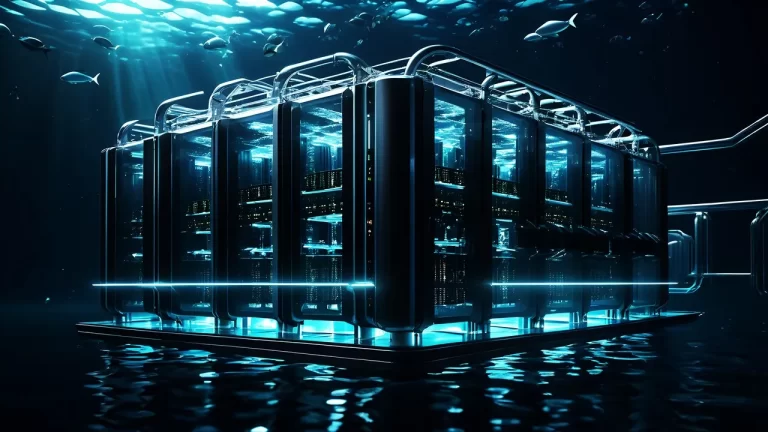It is interesting how artificial intelligence or AI is incorporated into multiple facets of our society. This allows people to work more easily, always make better and more powerful decisions, and also to solve significant problems. Some of them include that AI can play the role of a notable ally for climate change. It assists in the control of renewable power like solar and wind, through the development and installation of smart grids that do not require fuel.
But in this article, there is also a hidden cost of AI that is illustrated. The computing power required by AI systems is quite high, and that computing power is provided by large data centers. Many of these data centers consume considerable power and water to power them and cool them. For all the good that AI does for the world, it puts a strain on the earth’s resources regarding energy, and for that reason, one cannot help but wonder if development is not risky at all for the natural world.
AI and the Rise of Data Centers
To run AI, we need large computer systems stored in special buildings called data centers. These centers are where the AI models are trained and operated. They need huge amounts of electricity to run and also use lots of water to keep the machines cool.
Right now, data centers only use around 1% of the world’s electricity. That may not sound like much, but as AI grows so will the demand for more data centers and more energy. However, some other pundits view it as a potential issue that is likely to occur in the future.
Will Efficiency Keep Up?
There is hope that technology will become more efficient. New types of AI chips are being developed that claim to use less energy. However, even the most efficient chips still use a lot of power, especially as AI models become more complex. For example, a single question to an AI chatbot can use up to 10 times more electricity than a regular internet search.
AI tools that create videos, images, or audio from text need even more computing power. To support these tools, large-scale data centers, sometimes called “hyperscale” centers, are being built. These can use as much power as hundreds of thousands of electric cars in a year.
Hidden Costs and Risks
With the rapid growth of AI, some countries are already feeling the strain. In one example, data centers took up over 20% of the electricity supply in a European country, forcing a stop to new data center projects in some areas.
The problem goes beyond electricity. These data centers also use a lot of water for cooling. In places where water is already scarce, this can cause serious problems. Also, the parts used to build AI hardware depend on mining rare minerals, which can harm the environment.
To make things worse, some companies are not fully honest about how much pollution their data centers cause. Recent reports suggest that actual emissions may be much higher than what companies report.
The Case for Latin America
Latin America is emerging as the perfect ground for the development of new and purpose-built data centers. They prefer Brazil, Mexico, Chile, and other countries because they have sufficient and efficient energy infrastructure and political backing. It can come with new jobs, better reach for the internet, and much more in the technology industry.
However, there is a risk. If data centers act to meet the needs of developed countries only and disastrously ignore the local population’s needs and affect the environment, it may be qualified as digital extractivism. This implies using the region’s resources such as energy, water, and land to foster the welfare of other people and not for the upliftment of the region or area.
The regions of the world are already experiencing some difficulties. Nowadays, the data centers located in places such as Mexico, Chile, and Uruguay are exerting pressure on water and electricity frameworks. This is happening in areas that all along have been in regions experiencing drought and scarcity of water.
A Better Way Forward
But still, fair and sustainable development of AI will make it useful in the fight against climate change. This means efficient technology usage, truthfulness of the environmental effects, and ensuring that every sector benefits from the AI implementation.
Many Latin American countries are in a position that can be seized. It will be possible to establish cooperation with researchers, IT specialists, and other countries from the Global South to determine general guidelines and actions for the invention of AI. This may cover policy frameworks and incentives for the positive development of artificial intelligence to address local requirements, generate employment, and encourage clean energy solutions.
The idea is to harness the AI technology for civilizing and optimizing the climate change, economy, and operating away from harm and unkindness from both humans and the environment.








